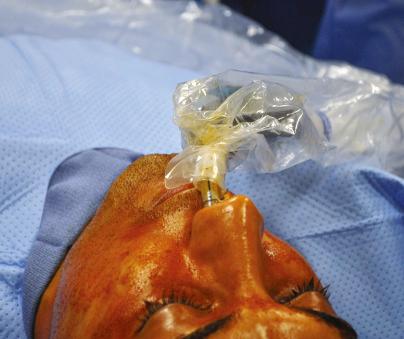Physical Address
304 North Cardinal St.
Dorchester Center, MA 02124
This chapter presents the principles and basic steps of the senior author’s operative technique for implant augmentation of the facial skeleton.
In anticipation of implant surgery, steps to minimize the likelihood of infection are taken. To facilitate intraoperative hemostasis, patients are instructed to discontinue any medications or foods that compromise the blood clotting system. To optimize intraoral hygiene, a professional dental examination and cleaning may be indicated. Patients are always prescribed chlorhexidine mouthwash for 48 to 72 hours prior to the anticipated surgery.
With the exception of chin augmentation, operations are performed with the patient under general anesthesia, preferably nasotracheal anesthesia. Since most operations employ intraoral incisions, this approach optimizes access and allows optimum preparation of the operative site as well as control of the airway ( Fig. 4.1 ). The operative field is infiltrated with a solution containing bupivacaine (Marcaine) and epinephrine (1:200,000), for immediate postoperative pain relief and to optimize intraoperative hemostasis. Both the skin and the oral mucosa are prepared with a povidone-iodine solution. Antibiotics, usually cephalosporins, are administered intravenously prior to the onset of surgery and intraoperatively depending on the length of surgery. Oral antibiotics are administered for the 5 days following surgery only if intraoral access for implant placement was employed.

Become a Clinical Tree membership for Full access and enjoy Unlimited articles
If you are a member. Log in here